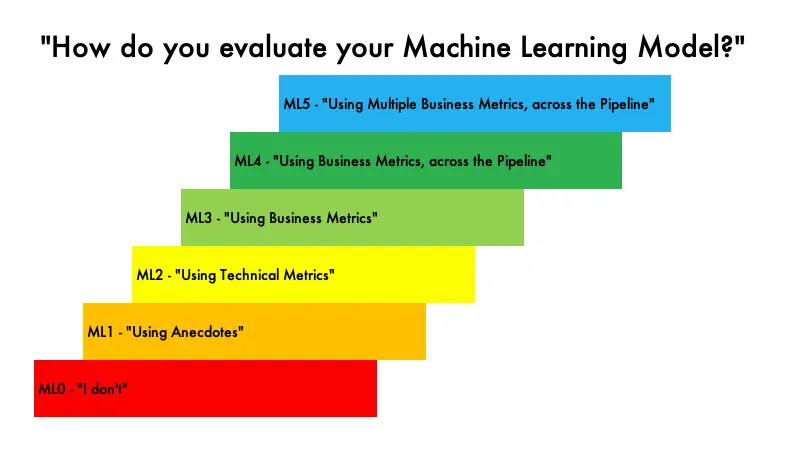The Importance of Scoping in MLOps: A Guide for ML Engineers
Introduction
In the realm of Machine Learning Operations (MLOps), the initial phase of scoping is often an overlooked yet critical step in the development of any machine learning project. Scoping involves a meticulous analysis and assessment of various factors, from the initial question of whether AI is needed to data availability, potential impacts, timelines, model evaluation, infrastructure needs, ethical considerations, risk assessment, and fallback policies. As an AI enthutiast, I emphasize the significance of scoping as it lays the foundation for the success and ethical integrity of any ML project. In this post, we will discuss the importance of scoping, the thought process behind embarking on an ML project, and delve into key considerations at each stage.
Scoping: The Initial Thought Process
 <p>
<p>
Figure 1. nitrocdn
Do I Need AI for This Project?
Before diving into the world of AI and machine learning, it’s essential to critically assess whether your project truly requires these technologies. AI is a powerful tool, but it’s not always the most cost-effective or efficient solution. Consider the following:
Can the problem be solved using traditional software or rule-based systems?
- Sometimes, a well-designed algorithm or set of rules can accomplish the task without the complexity of machine learning.
Is the scale and complexity of the problem commensurate with the use of AI?
- For small-scale, straightforward tasks, AI might be overkill.
What are the economic implications?
- Building and maintaining AI systems can be expensive. If a simpler solution suffices, it can save time and resources.
Example: Suppose you’re working on an application to recommend personalized playlists for a small local radio station. Instead of building a complex recommendation system, you might achieve the same results by manually curating playlists based on genre and user preferences.
 <p>
<p>
Figure 2. Towards Data Science
Data Assessment
If you determine that AI is indeed the right solution for your problem, the next step is to assess the data-related aspects:
Do I have the necessary data?
- For instance, if you’re working on a medical diagnosis model, do you have access to relevant medical records?
Where does the data come from?
- Is it sourced internally, from third parties, or publicly available?
Is the data labeled?
- Supervised learning models require labeled data for training.
Is the data free, or does it have associated costs?
- Cost implications are crucial, especially in commercial applications.
What if I don’t have labeled data?
- If you lack labeled data, you’ll need to decide whether to hire human raters or crowdsource labeling.
Example: Imagine you’re tasked with building a recommendation system for a local restaurant app. If you don’t have labeled data for user preferences, you might opt to crowdsource user ratings and reviews to generate labels for your machine learning model.
 <p>
<p>
Figure 3. Inspirit Scholars
Impact Assessment
Beyond data, it’s vital to consider the potential impact of the model or project:
Is the model aimed at good or potentially harmful outcomes?
- Consider the ethical implications of your work.
Does the model automate tasks or augment human decision-making?
- Automation can have far-reaching consequences.
Example: Suppose you’re developing an automated content recommendation system for a news platform. It’s essential to evaluate the impact of potentially reinforcing biases or promoting diverse viewpoints in the news consumption of users.
 <p>
<p>
Figure 4. Data Revenue
Timeline Estimation
Understanding the project’s timeline is crucial. It helps in resource allocation and managing expectations. Consider factors like data collection, model training, and evaluation.
Example: If you’re building a demand forecasting model for an e-commerce platform, you need to estimate the time required to collect and preprocess historical sales data, develop the model, and fine-tune it for production use.
 <p>
<p>
Figure 5. Medium
Model Evaluation
Before delving deep into an ML project, define your evaluation criteria. This step ensures that the model aligns with project goals and is aligned with business or ethical requirements.
Consider both Business Goals and ML Goals:
- It’s important to recognize that sometimes, the objectives of a machine learning model (ML goals) may differ from the broader business goals.
Using ML Goals as Proxies for Business Goals:
In cases where business and ML goals are not perfectly aligned, it’s possible to use ML goal metrics as proxies for business goals. For example, in a recommendation system, you may use metrics like click-through rates, user engagement, or customer retention as proxies for revenue growth.
Example: In a recommendation system for an e-commerce platform, the business goal might be to increase sales revenue, while the ML goal might be to maximize click-through rates. While these goals are related, they aren’t always perfectly aligned.
 <p>
<p>
Figure 6. Xenon Stack
Infrastructure Needs
Determine the infrastructure and resources needed for the project:
Is the deployment cloud-based or on IoT devices?
- Consider the scalability and resource requirements of your chosen infrastructure.
Is the system designed for online or batch processing?
- Real-time or batch processing decisions impact architecture and resource allocation.
Example: If you’re developing a real-time facial recognition system for a security application, you might need cloud-based infrastructure with powerful GPUs for efficient processing.
Risk Assessment and Fallback Policies
It’s crucial to consider what could go wrong during the project. Identifying potential risks, such as data leakage, model bias, or system failures, is part of a robust scoping process. Additionally, establish fallback policies for addressing these risks when they materialize. A fallback policy outlines the steps to take when the project encounters unforeseen challenges.
Example: If you’re developing an autonomous driving system, a risk might be sudden system failures. Your fallback policy could include safety mechanisms for the vehicle to stop safely if such failures occur.